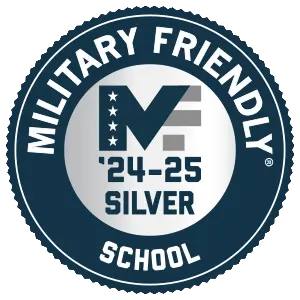The Education and Training Required to Become a Medical Assistant
 Healthcare careers are popular for their personal and practical rewards. Do you want a secure job with advancement opportunities in a thriving industry? Of course, you do. But most roles require a college degree, a disappointment for many adults who can’t afford to be out of the workforce for two, three or even four years. You can, however, launch an exciting career as a medical assistant in a fraction of the time.
Healthcare careers are popular for their personal and practical rewards. Do you want a secure job with advancement opportunities in a thriving industry? Of course, you do. But most roles require a college degree, a disappointment for many adults who can’t afford to be out of the workforce for two, three or even four years. You can, however, launch an exciting career as a medical assistant in a fraction of the time.
What Education and Training Are Required to Become a Medical Assistant?
You don’t need a formal education to become a medical assistant, but landing a job without it may be tough. Healthcare has become an increasingly complex field in the last few decades, making training too risky and time-consuming for most employers. Credentials give you an edge in a competitive hiring process by demonstrating proven skills.
Medical assisting students can choose from vocational school training, associate degree programs and even the rare bachelor’s option. But most opt for vocational programs because they’re affordable, accessible and lifestyle friendly.
The job-focused curriculum is a fusion of classroom education and the hands-on training you need to be confident in your abilities. You’ll graduate with a diploma in months, not years, prepared for certification and ready to begin your new career.
What Do You Learn During a Medical Assistant Diploma Program?
Diploma programs cover the clinical and administrative skills necessary to succeed in an entry-level position. Topics include:
Medical Terminology
Medical professionals need a strong grasp of healthcare terminology to communicate with colleagues and interpret medical records. This course won’t make you an expert, but it will provide you with a solid foundation upon which to build your vocabulary. You’ll learn about:
Medical prefixes — added at the beginning of words, prefixes modify their meaning. “Hypo-,” for example, meaning low or below normal or deficient, defines “hypotension” as low blood pressure. Learning common prefixes helps in understanding medical terms and their context.
Suffixes — suffixes are added at the end of a word to denote a particular condition. The “itis” in arthritis, bursitis, and appendicitis, for example, signifies an inflammatory disorder.
Root words — most medical terms are derived from Greek or Latin. Knowing that the Latin root word “tensio” refers to stretching or pressure, for example, helps make sense of the word “hypotension.”
Abbreviations and acronyms — medical professionals use abbreviations and acronyms to simplify documentation, but that can lead to confusion. This course covers the most common abbreviations and acronyms you’ll find in doctor’s notes, surgical reports and more, plus the units of measurement you’ll see on lab results and prescriptions.
Human Anatomy
Anatomy is the study of the structure and organization of the human body. It helps medical assistants describe anatomical locations in notes and during discussions with patients and colleagues. Students explore body regions like the head, neck, chest, abdomen and extremities and associated body cavities. They explore bones and joints including the skeletal system, including the names and locations of major bones and how they articulate to form joints, muscles that make up the three major muscle types (skeletal, smooth, and cardiac), their functions and locations. Plus, organ systems including the musculoskeletal, cardiovascular, respiratory, digestive, urinary, reproductive, nervous, and endocrine systems.
Pharmacology
Pharmacology is the study of drugs, including their properties, uses and effects on the human body. Concepts include drug categories and classifications like how medications are grouped based on their mechanisms of action, therapeutic uses, and potential side effects. Examples include analgesics, antibiotics, anticoagulants and many more. This course teaches students drug names and the difference between brand names, generic names, and chemical names.
Students learn about pharmacokinetics our how drugs are absorbed, distributed, metabolized, and eliminated by the body, pharmacodynamics or how drugs produce their therapeutic effects. Plus, side effects and adverse reactions including a look at the most common drug side effects, potential adverse reactions, and management strategies. Finally, students learn about medication safety including medication safety practices including accurate dosing and proper storage.
Recordkeeping
During this course students learn how to create, organize, store, and manage medical records. Students are introduced to medical documentation including taking clear, accurate and objective notes aligned with legal and industry standards. Students learn about electronic health records, how to access, enter, update, store, and secure data in digital recordkeeping systems. A focus is put on patient confidentiality while students learn about patient privacy laws, including the Health Insurance Portability and Accountability Act (HIPAA), and a students’ responsibility to protect sensitive health information.
This course teaches record release and archiving, and the guidelines for releasing and retaining medical records, including the legal requirements and time frames for storing patient information. Plus, quality assurance and best practices for recordkeeping, including accuracy, timeliness, proper formatting, and adherence to regulatory guidelines.
Clinical Procedures
During this course, students perform a broad range of clinical procedures. They get a crash course in theory followed by demonstrations and hands-on opportunities to learn each of these essential skills including vital signs. Students become familiarized with vital sign equipment, such as thermometers, sphygmomanometers, stethoscopes, and pulse oximeters. And experienced instructors will walk them through how to use them to measure body temperature, blood pressure, pulse, respiratory rate, and peripheral oxygen saturation.
This course highlights drug administration and how to administer oral (by mouth), topical (on the skin), intramuscular (into a muscle) and subcutaneous (under the skin) medications. Topics include patient rights, informed consent, dosage calculations, medication preparation, administration techniques and documentation. Students will learn how to assist with examinations while they learn how to prepare examination rooms, set up instrument trays, manage equipment and assist with patient positioning before, during and after procedures.
The next curriculum of this course is in wound care and dressing techniques, including how to remove sutures and recognize signs of infection. This course teaches about specimen collection and how to properly collect, label, store, and ship biological samples such as urine, stool, and sputum. Students learn about infection control and how to prevent the spread of disease in healthcare offices through disinfection, sanitation, and sterilization techniques. Also covered are personal protection strategies, including the use of personal protective equipment (PPE).
Further study involves both training and certification in EKG. Students will learn to perform electrocardiograms, tracings of the electrical activity in the heart. Topics include electrode placement, lead attachment, patient positioning, electrocardiograph use, and EKG interpretation. Plus, classes will prepare students for First aid/CPR certification, because most medical assistant programs include first aid and basic life support training to help you handle emergencies.
Phlebotomy
Medical assistant program students learn to draw blood. With the right training, it’s not as hard as it sounds. Training includes cardiovascular anatomy and physiology curriculum and take a deeper dive into cardiovascular anatomy and physiology with a focus on the structure and function of veins and blood composition. There will be an equipment selection where students explore the different needles and collection devices used to draw blood, learning how to select the right types based on patient assessment and the tests ordered.
This course will teach students about patient preparation and how to explain the phlebotomy procedure to patients and provide for their comfort and safety. Plus, venipuncture techniques and how to select an appropriate vein, use tourniquets and perform venipuncture with minimal discomfort to the patient. Students learn about sample collection and the proper order of drawing for multiple tubes, collecting appropriate volumes, minimizing the risk of contamination, and proper sample handling.
An important section of this course involves complications and the troubleshooting the common complications of phlebotomy, such as fainting, insufficient blood flow, and hematoma formation. As well as special populations learning techniques for collecting blood samples from pediatric patients, seniors and patients who are anxious or needle phobic.
Administrative Procedures
Medical assistant programs teach students how to handle both clinical and administrative tasks. Many of their clinical duties have significant clerical components. The curriculum covers medical office functions and how healthcare offices are organized and the responsibilities of various team members. Students learn how to book appointments using paper schedules and scheduling software. They also learn to maintain an organized, efficient, and productive appointment calendar.
During this course students learn about patient registration and how to collect and update patient demographics, insurance information and emergency contacts. They learn about billing and coding and how to receive basic medical billing and coding training to help them code clinical forms correctly. Students also learn the value of client care and communication with a deep dive into customer service, professionalism, and workplace expectations.
Medical Law and Ethics
Healthcare is a strictly regulated industry with high ethical standards. Medical assistant programs cover the regulatory and moral frameworks that guide healthcare professionals. Students discuss medical regulations and the many laws and regulatory agencies that govern healthcare at the local, state, and federal levels. They learn about informed consent including the disclosure of information about procedures, risks, and benefits.
During this course, students learn about patient autonomy and the right of patients to make their medical decisions free from coercion. They learn about professional liability and the elements of malpractice, standards of care and the potential legal consequences of negligence or medical errors. Students focus on how to properly make ethical decisions by studying common ethical dilemmas in healthcare with an emphasis on strategies for moral decision-making.
Students also learn about advanced directives and powers-of-attorney or the legal avenues for healthcare decision-making when patients lose physical or cognitive capacity. Plus, they learn about end-of-life issues with an exploration of the legal and ethical complexities of end-of-life care. Expect lively discussion on tough topics, including palliative care, death with dignity and experimental treatments.
How Long Is a Medical Assistant Program?
Full-time students can complete a vocational school diploma program in just 12 months. Flexible scheduling options include both day and evening hybrid classes. You can still work and meet family obligations without putting off your education, and the perks don’t stop there.
Even before graduation, vocational schools work to connect students with potential employers. You’ll have access to exclusive job boards and networking opportunities. By supporting local healthcare facilities, schools become their go-to source for qualified job applicants. Students are in the right place at the right time to open the door when opportunity knocks.
Final Thoughts
If you’re not satisfied with your current job, it’s never too late to change course. Let a vocational school medical assistant program be your road map to the future.
Want to Learn More?
Ohio Business College’s Medical Assisting training program will prepare you for a career as a medical assistant, capable of working in any medical office or facility. Our school’s caring instructors have real world experience and will teach you the necessary skills to succeed in the medical assisting profession over the course of our comprehensive training program. We have smaller class sizes than other schools, which gives you more access to personalized attention from our knowledgeable instructors. Plus, our hybrid model offers more convenience and flexibility.
If you are interested in a medical assistant profession, let Ohio Business College answer any questions you may have. Contact us today to learn more about our Medical Assistant program.

